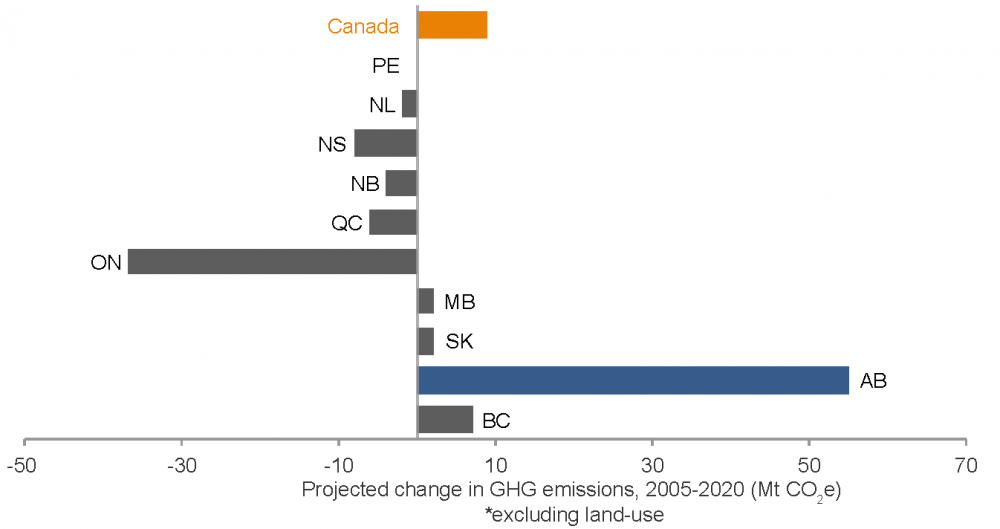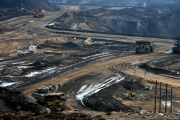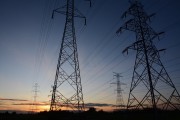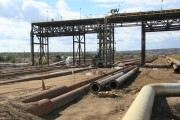The wrap-up of UN climate talks in Lima, Peru, comes at a significant time for Alberta. Environment Canada’s latest Emissions Trends report confirms that Canada is not on track to hit its 2020 climate target, and the growth in Alberta’s carbon pollution is a significant barrier.
But Alberta’s new climate strategy is expected by the end of the year, and the province has several big opportunities to turn things around.
Alberta emits more carbon pollution than Ontario and Quebec — home to over 60 per cent of Canada’s population — put together. Progress in other provinces is being cancelled out by rising carbon pollution from Alberta.

With rapid growth in the oilsands projected to continue, it’s critical to get Alberta’s carbon pollution under control. Here are some of the big ways Alberta could tackle that challenge.
Strengthen the regulations
The Government of Alberta introduced the Specified Gas Emitters Regulation (SGER) in 2008. The regulation only targets very large sources of carbon pollution in the province, requiring those companies to reduce the intensity of their emissions by just 12 per cent. It also gives companies the option to buy offsets or pay $15/tonne into a tech fund instead of reducing actual emissions. That $15/tonne when applied to only 12 per cent of emissions actually costs companies just $1.80 per tonne on average — and has done almost nothing to slow the growth of carbon pollution, particularly from the oilsands.
In the absence of other effective climate policies, such as an economy-wide carbon price, Alberta’s industrial emissions regulations need to be strengthened. Our analysis has found that a more effective carbon price would land in the range of $100 per tonne by 2020, and apply to a higher proportion of emissions — so it would be more cost-effective for companies to make real reductions in their carbon pollution, rather than simply paying the penalty as most do now.
Alberta can get on track by strengthening its current carbon regulations, and increasing the compliance price incrementally over time to reach that point. This gradual increase would give businesses time to reduce their carbon pollution in anticipation of higher carbon prices without being immediately faced with the full cost at the outset. It would cut carbon emissions and contribute substantially to the funds the province has to invest in low-carbon technology.
76% of Albertans support stronger carbon pollution regulations for industrial emitters
Given the how weak the current regulations are, there is plenty of room for improvement. And polling conducted earlier this year found this is the kind of change Albertans want, with 76 per cent supporting stronger carbon pollution regulations for industrial emitters.
Phase out coal ahead of schedule
Burning coal in Alberta to generate electricity leads to roughly $300 million dollars in health care costs every year.
Alberta burns more coal than the rest of Canada combined, and coal plants are a major source of toxic air contaminants. Every year in Alberta this pollution contributes to thousands of asthma episodes, hundreds of emergency room visits for respiratory and cardiovascular illnesses, and chronic exposure resulting in nearly 100 premature deaths. The health and social costs of coal pollution add at least 3.6 to 5 cents per kilowatt-hour, nearly doubling the cost of electricity production.
Under current rules, there is coal power in Alberta that will be allowed to run until 2062 without any carbon pollution reductions. That means Alberta can reduce carbon pollution substantially by moving faster to phase out coal-fired power generation.
Level the playing field for renewable energy
Because of how Alberta’s electricity market works, solar and wind electricity generation are actually driving prices down for consumers.
Solar produces electricity when the sun is shining. That’s generally when electricity demand is highest. Higher demand typically translates into higher prices. However, solar micro-generators in Alberta are paid a fixed rate. This means they don’t get market value and, unlike other electricity producers, solar sells at a discount. That can discourage homeowners from becoming small-scale solar producers. As a result, Alberta is only capitalizing on a fraction of its nation-leading solar energy resource.
That can also hurt consumers since solar power helps us hedge against volatile fuel prices as Alberta’s electricity grid becomes more reliant on natural gas. The same goes for wind.
Wind energy has a 20-year history of success in Alberta, with the province taking an early lead in Canada on wind development. The province’s wind power capacity exceeded 1,400 megawatts (MW) as of 2014. That’s enough to power more than 600,000 homes.
In recent years, however, Alberta has fallen behind other provinces in developing its wind resource.
Wind energy’s costs are already lower than new coal and on par with new natural gas generation — even if natural gas prices stay relatively low for 20 years. And while wind and solar have no fuel cost risks, consumers will pay extra for unexpected natural gas price increases.
In other words, Albertans have a lot to gain by expanding renewable energy production. But there is a huge obstacle in the way.
Because they have no fuel costs, Alberta’s wind turbines bring down electricity prices for consumers whenever the wind blows.
That makes it tough for wind energy producers to compete. Wind energy lowers prices precisely when it’s selling electricity to the grid, resulting in wind operators being paid the lowest price by a long shot — 30 per cent below the grid average.
If Alberta levelled the playing field for solar and wind producers it could increase investment, lower prices for consumers and reduce Alberta’s carbon pollution.
If Alberta levelled the playing field for solar and wind producers it could increase investment, lower prices for consumers and reduce Alberta’s carbon pollution.
And there is even more that can be done.
Introduce Energy Efficiency Programs
Alberta is the only jurisdiction in North America that doesn’t currently have an Energy Efficiency program. This translates into a huge untapped carbon pollution reduction opportunity.
If Alberta were to implement just the energy efficiency opportunities that are currently economic, providing a financial return competitive with conventional investment options, Albertans could be saving $3 billion dollars a year by 2020. On top of that, it would potentially reduce carbon pollution by 26 Mt — halfway to the province’s 50 Mt goal.
Progress on energy efficiency is usually achieved through a combination of energy efficiency programs and complementary regulations. Alberta is well positioned to fund new energy efficiency programs with the money collected through the SGER, while a perfect opportunity exists to introduce new regulations simply by adopting national energy efficiency standards into the Alberta Building Code.
By promoting energy efficiency, Alberta can make notable reductions in carbon pollution while lowering energy costs at the same time.
By promoting energy efficiency, Alberta can make notable reductions in carbon pollution while lowering energy costs at the same time.
As the hub of Canada’s oil and gas development, Alberta faces unique challenges when it comes to driving down carbon pollution. But as Alberta Premier Jim Prentice said in a speech to the Edmonton Chamber of Commerce this week, “In today’s world, if you are in the energy business, you are also in the environment business.”
Strengthening carbon pricing, phasing out coal ahead of schedule, levelling the playing field for renewable electricity producers and introducing energy efficiency programs — these solutions are affordable and available. It’s Alberta’s time to show leadership by implementing them.
This op-ed is Part 3 in a series exploring climate action in Canada's westernmost provinces. See Part 1: How the West can help drive Canada’s action on climate, and Part 2: How B.C. does climate policy right.






